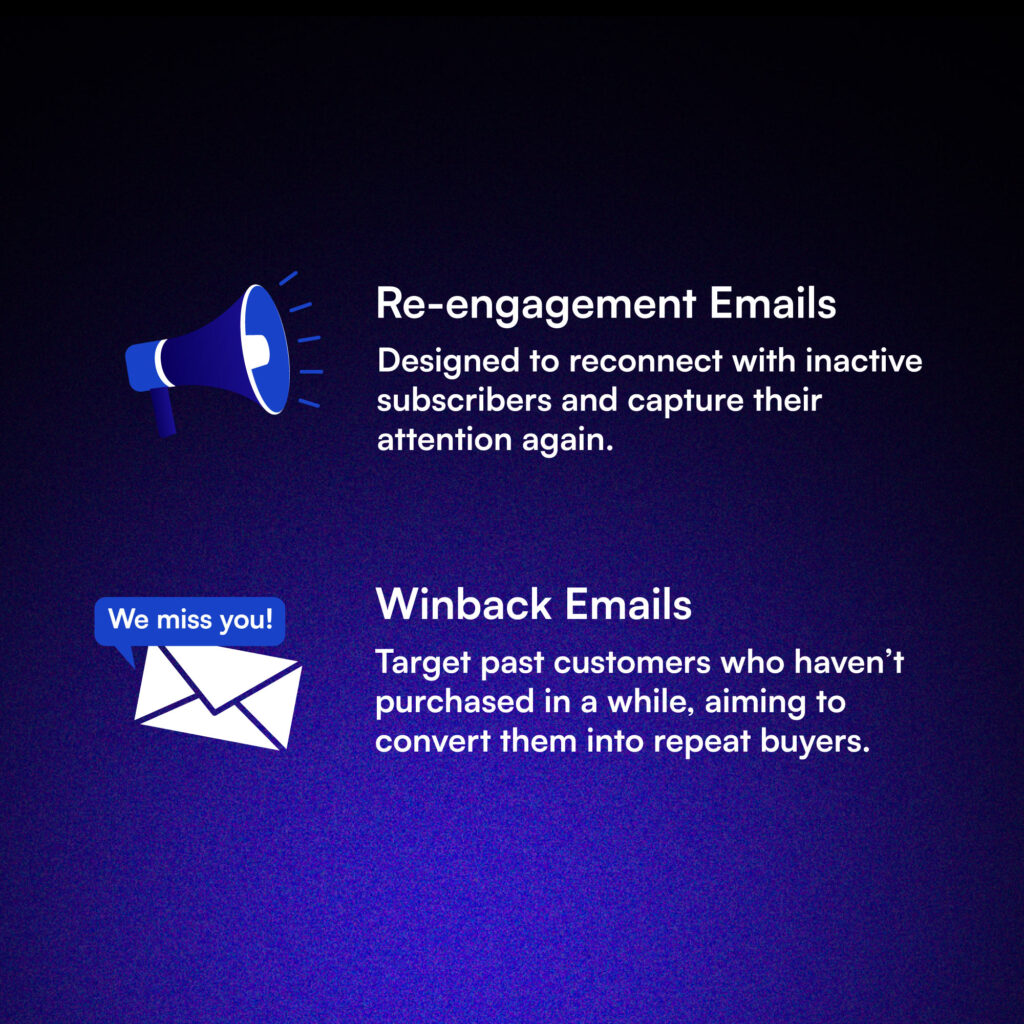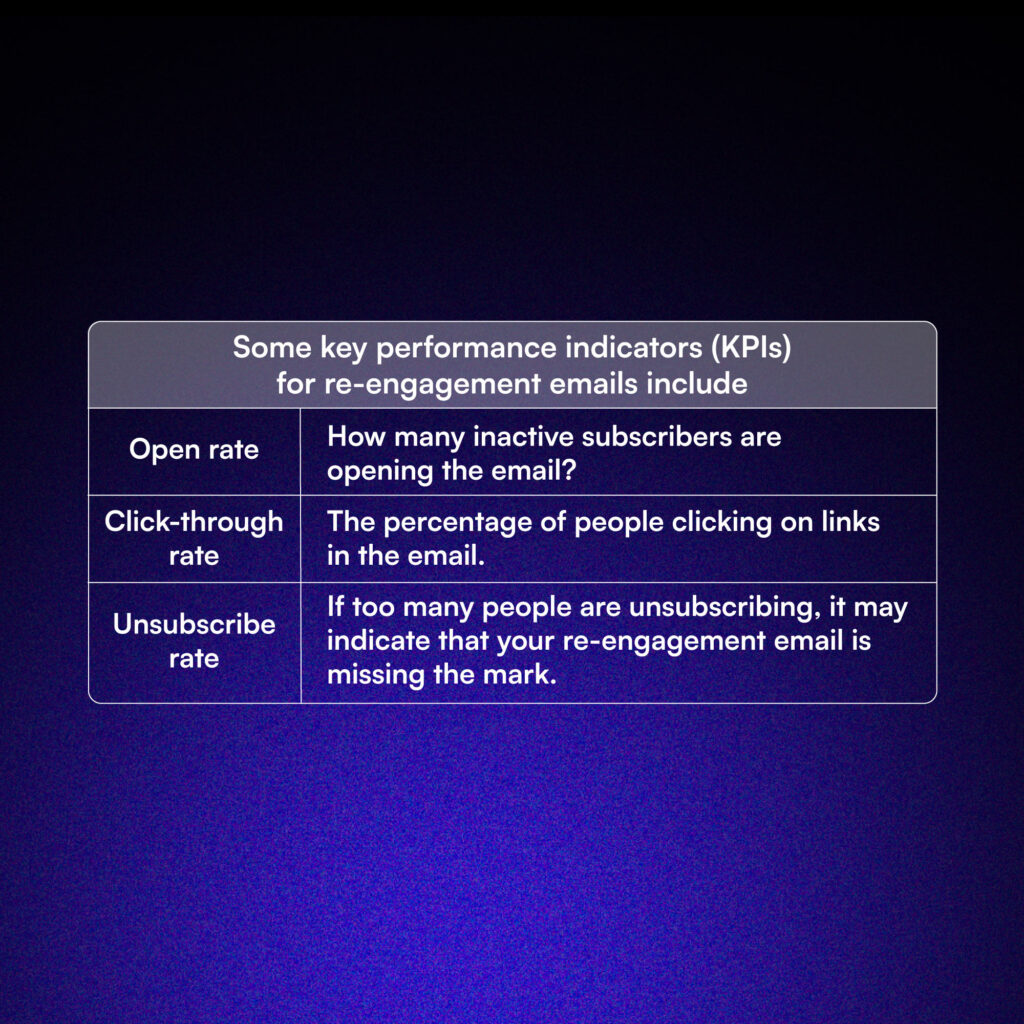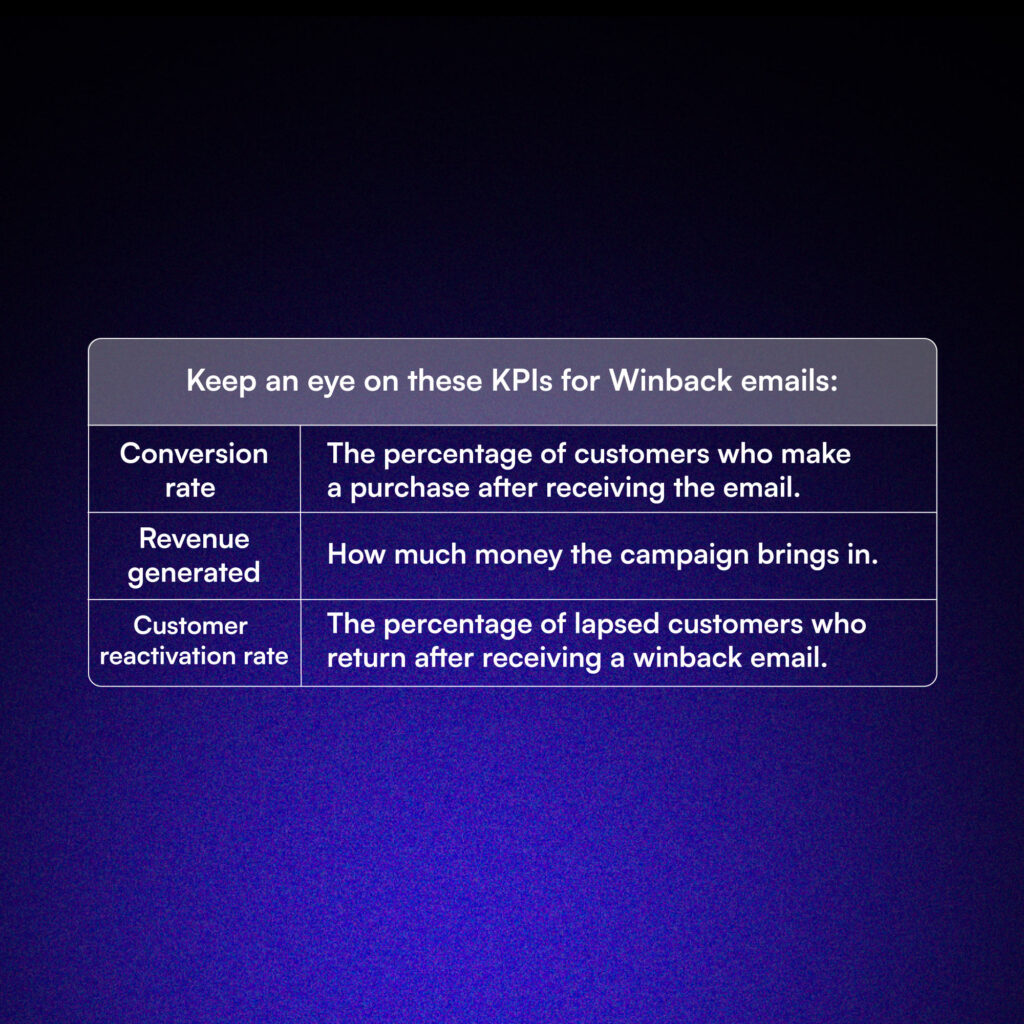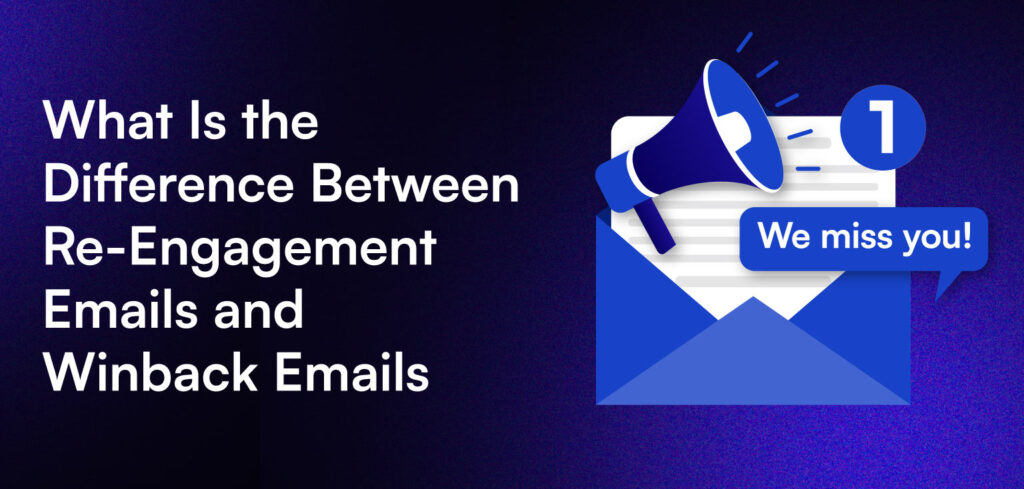In email marketing, keeping your audience engaged is key, but sometimes, subscribers go quiet for some reason. If you’ve noticed that some of your subscribers or customers are starting to slip away, don’t worry—it’s not too late to reconnect and win them back!
This is where re-engagement emails and winback emails come into play.
They both serve the same purpose—reconnecting with your audience—but they do so in different ways.
However, how do you know which type of email you should send?
Let’s break it down in a way that makes sense without all the jargon. Learn exactly when to use them. Discover how the right email marketing strategy builds stronger relationships with your customers.
By the end of this blog, you’ll have a clear understanding of both and why 31% of marketers leverage email marketing.
Let’s jump straight into it!
Definition and Purpose
First, let’s get on the same page with what these terms mean.

Re-engagement Emails
Re-engagement emails are crafted to reconnect with those who’ve stopped engaging with your content. Maybe they’ve stopped opening your emails or haven’t clicked on any links in months.
This is your chance to pull them back in.
The goal is simple: grab their attention again and reignite the connection. Whether it’s through a special offer, a friendly check-in, or showcasing something new and exciting, a re-engagement email says, “Hey, we miss you! Want to come back?”
Winback Emails
On the flip side, winback emails are all about converting past customers who haven’t made a purchase in a while. These are people who have already bought something from you but have since moved on. They’re familiar with your brand, but for some reason, they’ve stopped engaging with you.
The objective here is to turn these one-time customers into repeat buyers. Winback emails are more transactional than re-engagement emails. It offers a discount or incentive to nudge them into purchasing again.
Related blog: How to Set Up an Effective Klaviyo Abandoned Cart Flow
Target Audience and Timing
So, who should receive these emails, and when should you send them?
Targeting Re-engagement Emails: Identifying the Right Audience and Timing
Re-engagement emails are perfect for subscribers who signed up for your newsletter or marketing emails but have fallen silent. Maybe they were once active but now haven’t opened an email in the last 60 or 90 days. You don’t want to give up on them just yet, so this email is your chance to reconnect before they fully disengage.
Timing is everything here. You don’t want to send a re-engagement email too soon, or it might feel pushy. Wait until it’s clear they’ve lost interest, but not so long that they’ve forgotten all about you.
Who Gets Winback Emails and When's the Best Time to Send Them
Winback emails are reserved for those who have made a purchase but have since disappeared.
Maybe they loved their first purchase but didn’t return for a second. Life happens, and sometimes people just forget how much they enjoyed your product. A well-timed winback email can remind them.
The right time to send a winback email varies depending on the type of business you run. If your product has a short lifecycle. Just like skincare products or subscription boxes, you might send a winback email a month or two after their last purchase. If you’re selling big-ticket items, you might wait longer.
You might also like: How Many Marketing Emails Should You Send Per Week? Plus 4 Steps to A/B Test For The Ideal Frequency
Content and Strategy
Now that you know when to send these emails, let’s talk about what to say.
Re-engagement Email Content Strategy
Re-engagement emails need to feel personal. You’re trying to remind your subscribers why they signed up in the first place. It’s a great idea to offer them something new, exciting, or exclusive to draw them back in. You might even ask if there’s a reason they haven’t been interacting.
Maybe your content isn’t hitting the mark for them anymore, and they’d appreciate a different approach.
Think about subject lines such as:
- “Are you still interested? Let’s catch up!”
- “We’ve missed you! Here’s something just for you.”
The content itself should be friendly and light. Offer something of value, whether it’s a discount or a sneak peek at new products. Also, a reminder of why they loved your emails to begin with.
Read this next: How to Create Re-engagement Emails that Actually Work
Winback Email Content Strategy
Winback emails, on the other hand, are more direct. You’re targeting people who have already bought from you, so you don’t need to introduce your brand. You just need to remind them of what they’re missing out on. Incentives like discounts, free shipping, or even personalized product recommendations work well here.
Your subject line needs to grab attention and create urgency, like:
- “We miss you—come back for 20% off!”
- “It’s been a while! Ready to shop again?”
The content should focus on what they loved about your product and why they should come back. Don’t overcomplicate it—keep the message clear and focused on the offer.
You might like: Blog 18 How to Write a Winback Email that Converts
Metrics and Measurement
How do you know if your re-engagement or winback email campaign is working? Of course, by tracking the right metrics!
Re-engagement Email Campaign Metrics
For re-engagement emails, you want to focus on how well your emails are sparking interaction.
Are people opening them? Are they clicking on links?
These engagement metrics will tell you whether your email content is effective.

Winback Email Campaign Metrics
With winback emails, the main focus is on conversions. You want to see how many of those past customers are returning to make another purchase.

So What Now
If your email marketing efforts are falling flat, it’s time to evaluate how you’re using re-engagement and winback emails. These strategies can reignite your connection with subscribers and bring back past customers, boosting both engagement and sales.
Take a closer look at your current email strategy and consider implementing these campaigns to keep your audience engaged and coming back for more.


